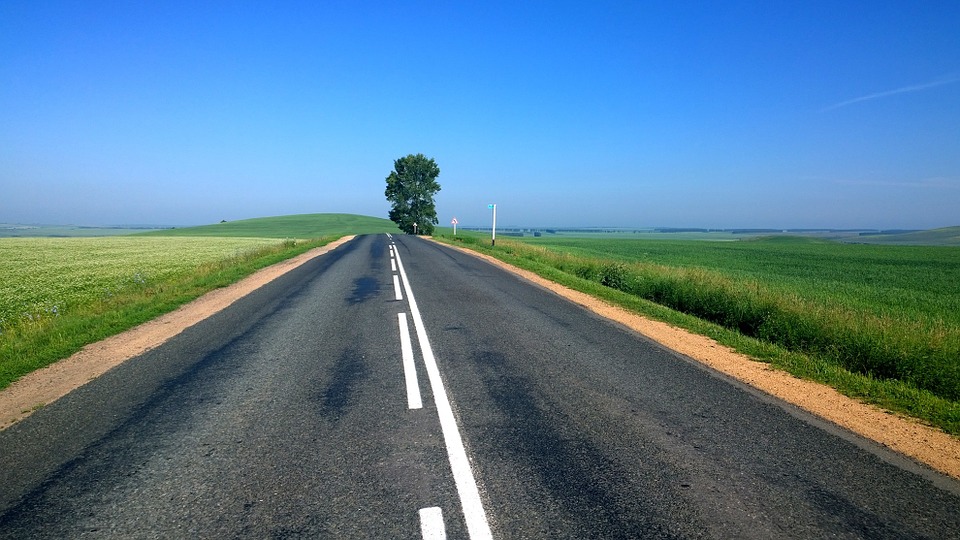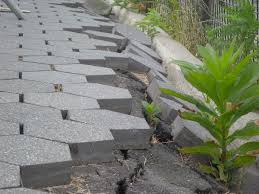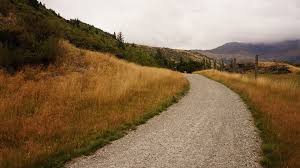The difference between various road surfaces
Asphalt, Gravel, Concrete and Pavers, but many countries use certain material depending on the area conditions and climate, despite concrete roads having some major advantages. Concrete and Asphalt are more commonly used. Learn about the advantages and disadvantages of the different road paving surfaces in this article.
Asphalt:

One of the most popular types of construction ever since its inception in the early 1920’s is asphalt paving. In this construction technique, a layer of asphalt is laid on top of an equally thick gravel base. Advantages of this form of road construction are that the pavement proves relatively easy to repair and maintain as well. However, asphalts is known to be significantly less durable and stronger than most other choices and isn’t the best for the environment either. Polypropylene and polyester geosynthetics have also been used for this purpose and in some northern countries, a layer of polystyrene boards have been used to delay and minimise frost penetration into the subgrade.
Depending on the temperature at which it is applied, asphalt is categorised as hot mix, warm mix, or cold mix. Hot mix asphalt is applied at temperatures over 300 °F (150°C) with a free-floating screed. Warm mix asphalt at temperatures of 200-250 °F (95-120°C), resulting in reduced energy usage and emissions of volatile organic compounds. Cold mix asphalt is often used on lower volume rural roads, where hot mix asphalt would cool too much on the long trip from the asphalt plant to the construction site.
An asphalt concrete surface will generally be constructed for high-volume primary highways having an average annual daily traffic load greater than 1200 vehicles per day. Advantages of asphalt roadways include relatively low noise and relatively low cost compared with other paving methods. Disadvantages are less tensile strength than concrete, the tendency to become slick and soft on hot weather and a certain amount of hydrocarbon pollution to soil and groundwater or waterways.
In 1960’s, rubberized asphalt was used for the first time, mixing crumb rubber from used tires, with asphalt. While a potential use for tires that would otherwise fill landfills and present a fire hazard, rubberized asphalt has shown a greater incidence of wear in freeze-thaw cycles in temperate due to non-homogeneous expansion and contraction with non-rubber components. Also, application of rubberized asphalt is more temperature-sensitive and in many locations can only be applied at certain times of the year. Study results of the long-term acoustic benefits of rubberized asphalt are inconclusive. The initial application of rubberized asphalt may provide 3-5 decibels (dB) reduction in tire-pavement source noise emissions; however, this translates to only 1-3 decibels (dB) in total noise level reduction (due to the other components of traffic noise). Compared to traditional passive attenuating measures (e.g. noise walls and earth berms), rubberized asphalt provides shorter-lasting and lesser acoustic benefits at a typically much greater expense.
Concrete:

Concrete is another popular choice for roadways, though it is typically only used for local roads and not other types of construction. Concrete surfaces (specifically, Portland cement concrete) are a created mix of Portland cement, coarse aggregate, sand and water. In virtually all modern mixes there will also be various admixtures added to increase workability, reduce the required amount of water, mitigate harmful chemical reactions and for other beneficial purposes. In many cases, there will also be Portland cement substitutes added, such as fly ash. This can reduce the cost of the concrete and improve its physical properties.
The material is applied in the freshly mixed slurry and worked mechanically to compact the interior and force some of the cement slurries to the surface to produce a smoother, denser surface free from honeycombing. The water allows the mix to combine molecularly in a chemical reaction called hydration.
There are three major types of concrete road surfaces – jointed plain (JPCP), jointed reinforced (JRCP) and continuously reinforced (CRCP). The distinguishing feature between the three being the joint system that is used to help prevent cracks from forming. Jointed plain concrete pavements contain joints to control the location of all the expected shrinkage cracks. The concrete cracks at the joints and not elsewhere in the slabs. Jointed plain pavements do not contain any steel reinforcement. However, there may be smooth steel bars at transverse joints and deformed steel bars at longitudinal joints. The spacing between transverse joints is typically about 15 feet (4.6m) for slab 7 to 12 inches (180 to 300mm) thick. Jointed reinforced concrete pavements contain steel mesh reinforcement (sometimes called distributed steel). In jointed reinforced concrete pavements, designers increase the joint spacing purposely and include reinforcing steel to hold together intermediate cracks in each slab.
The original pavement was laid in the 1950’s and has been significantly altered since.
Something to know about:
- Durability and maintenance free life: Concrete roads have a long service life of forty years, whereas asphalt roads last for ten years. Moreover, during this service life concrete road do not require frequent repair or patching work like asphalt roads.
- Vehicle consumes less fuel when running over a concrete road, consumes 15-20% less fuel than that on asphalt roads. This is because of the fact that a concrete road does not get deflected under the wheels of loaded trucks.
- Resistant to automobile fuel spillage and extreme weather: Unlike asphalt roads, concrete roads do not get damaged by the leaking oils from the vehicles or by the extreme weather conditions like excess rain or extreme heat.
- Greener process: Asphalt (bitumen) produces lots of highly polluting gases at the time of melting it for paving. Also, less fuel consumption by the vehicle running on a concrete road means less pollution.
- Saving of natural resources: Asphalt (bitumen) is produced from imported petroleum, the reserve of which is becoming reduced drastically. On the other hand, concrete (cement) is produced from abundantly available limestone.
Pavers:

A paver is a paving stone, tile, brick or brick-like piece of concrete commonly used as exterior flooring. In a factory, concrete pavers are made by pouring a mixture of concrete and some type of colouring agent into a mould of some shape and allowing to set. They are applied by pouring a standard concrete foundation, spreading sand on top, and then laying the pavers in the desired pattern. No actual adhesive or retaining method is used other than the weight of the paver itself except edging. Pavers can be used to make roads, driveways, patios, walkways and other outdoor platforms.
Gravel:

A gravel road is a type of unpaved road surfaced with gravel that has been brought to the site from a quarry or stream bed. They are common in less-developed nations, and also in the rural areas of South Africa. In New-Zealand and other Commonwealth countries, they may be known as ‘metal roads‘. They may be referred to as ‘dirt roads’ in common speech, but that term is used more for unimproved roads with no surface material added. If well constructed and maintained, a gravel road is an all-weather road.
Sources:
https://globalroadcom/road-construction
https://en.wikipedia.org/wiki/Road_surface
https://pixabay.com/en/road-asphalt-freeway-route-travel-691127/
https://en.wikipedia.org/wiki/Road
https://commons.wikimedia.org/wiki/File:Hex_pavers_sliding_to_Hudson_W60_jeh.jpg
https://pixabay.com/en/photos/gravel%20road/
If you are interested in becoming one of our subscribers, please visit our website.
To view notes with screenshots on how to use our website, please visit our Wiki site.
To view more articles, please visit our blog.
About Devika Suresh
I started at Leads 2 Business in January 2010 (12 Years ago). I am presently Deputy HOD of L2Q. I started in the Daily Tenders Bills department and worked my way up to the L2Q department.










volsun
This Blog was very informative.
Eldary Carpenter
Good morning
Thank you for your feedback. I have e-mailed our brochure to you should you be interested in subscribing for Leads on Tenders and/or Private Projects.
Ruben
Very informative thanks devils well done
Eldary Carpenter
Thank you for your feedback.
Nadine
What a great read Devi 🙂
Eldary Carpenter
Thank you for the feedback Nadine, have a lovely day.
Tremix engineers
Good Information,thanks for sharing. For more details visit http://www.tremixengineers.com
Eldary Carpenter
Thank you for your feedback.
Kindest regards
Eldary Carpenter